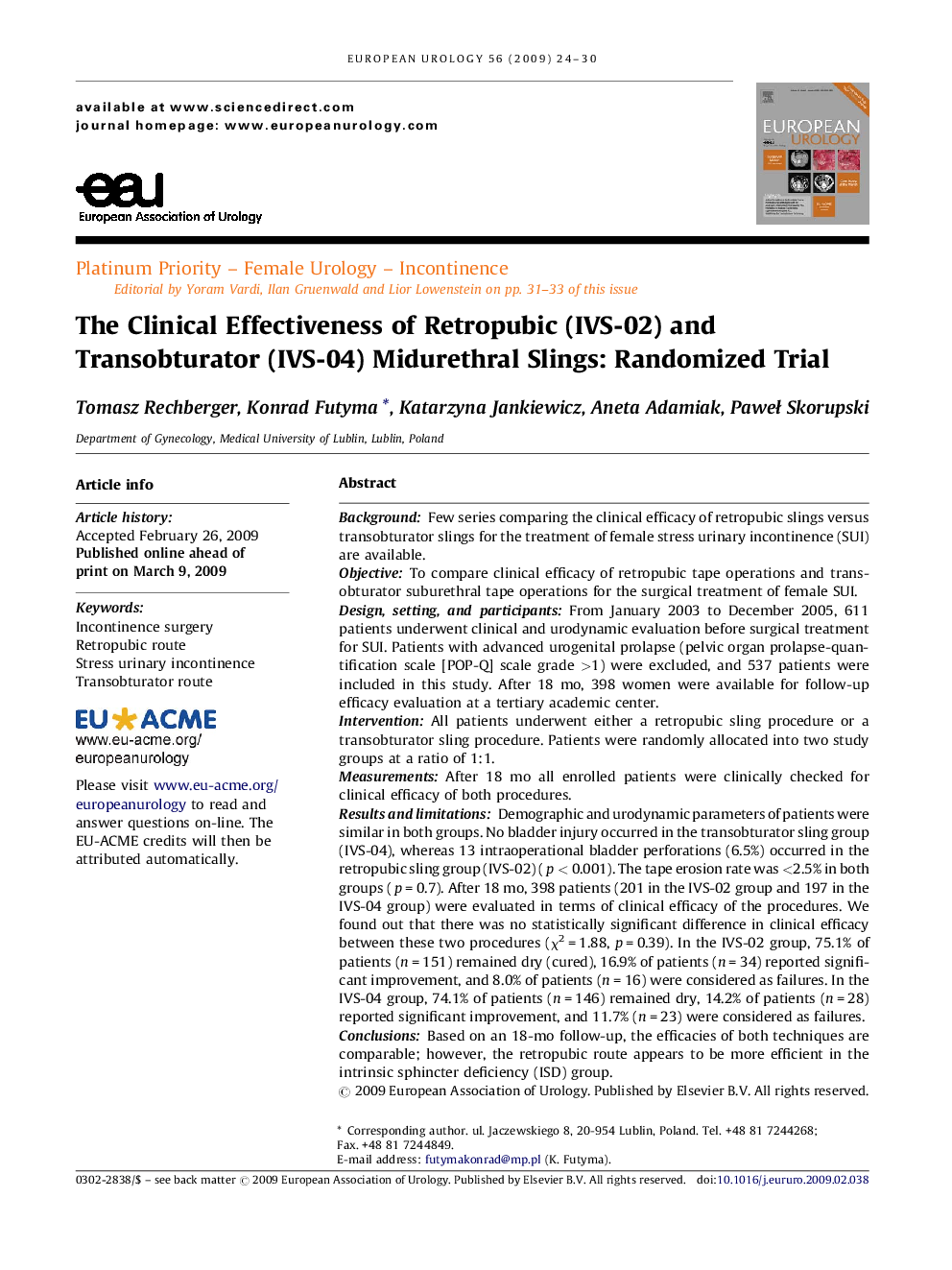| کد مقاله | کد نشریه | سال انتشار | مقاله انگلیسی | نسخه تمام متن |
|---|---|---|---|---|
| 3925198 | 1253124 | 2009 | 7 صفحه PDF | دانلود رایگان |

BackgroundFew series comparing the clinical efficacy of retropubic slings versus transobturator slings for the treatment of female stress urinary incontinence (SUI) are available.ObjectiveTo compare clinical efficacy of retropubic tape operations and transobturator suburethral tape operations for the surgical treatment of female SUI.Design, setting, and participantsFrom January 2003 to December 2005, 611 patients underwent clinical and urodynamic evaluation before surgical treatment for SUI. Patients with advanced urogenital prolapse (pelvic organ prolapse-quantification scale [POP-Q] scale grade >1) were excluded, and 537 patients were included in this study. After 18 mo, 398 women were available for follow-up efficacy evaluation at a tertiary academic center.InterventionAll patients underwent either a retropubic sling procedure or a transobturator sling procedure. Patients were randomly allocated into two study groups at a ratio of 1:1.MeasurementsAfter 18 mo all enrolled patients were clinically checked for clinical efficacy of both procedures.Results and limitationsDemographic and urodynamic parameters of patients were similar in both groups. No bladder injury occurred in the transobturator sling group (IVS-04), whereas 13 intraoperational bladder perforations (6.5%) occurred in the retropubic sling group (IVS-02) (p < 0.001). The tape erosion rate was <2.5% in both groups (p = 0.7). After 18 mo, 398 patients (201 in the IVS-02 group and 197 in the IVS-04 group) were evaluated in terms of clinical efficacy of the procedures. We found out that there was no statistically significant difference in clinical efficacy between these two procedures (χ2 = 1.88, p = 0.39). In the IVS-02 group, 75.1% of patients (n = 151) remained dry (cured), 16.9% of patients (n = 34) reported significant improvement, and 8.0% of patients (n = 16) were considered as failures. In the IVS-04 group, 74.1% of patients (n = 146) remained dry, 14.2% of patients (n = 28) reported significant improvement, and 11.7% (n = 23) were considered as failures.ConclusionsBased on an 18-mo follow-up, the efficacies of both techniques are comparable; however, the retropubic route appears to be more efficient in the intrinsic sphincter deficiency (ISD) group.
Journal: European Urology - Volume 56, Issue 1, July 2009, Pages 24–30